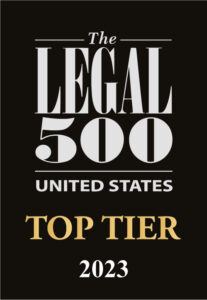Check out our summary of significant Internal Revenue Service (IRS) guidance and relevant tax matters for the week of January 13, 2025 – January 17, 2025.
TAX CONTROVERSY-RELATED DEVELOPMENTS
January 15, 2025: The US Department of the Treasury (Treasury) and the IRS published final regulations, providing guidance on the resolution of federal tax controversies by the IRS Independent Office of Appeals (IRS Appeals). These final regulations are applicable to requests for IRS Appeals consideration made on or after February 14, 2025.
The Taxpayer First Act of 2019 (TFA) codified IRS Appeals and prescribed that its consideration should be “generally available to all taxpayers” who wished to resolve their federal tax controversies. Proposed regulations published on September 13, 2022, identified 24 exceptions to the term “federal tax controversy.” These exceptions preclude IRS Appeals from considering taxpayer challenges to the constitutionality of statutes and the validity of regulations, as well as the procedural validity of notices and revenue procedures. During the comment period for the proposed regulations, the exceptions regarding statutory/regulatory challenges were the focus of most public comments by far. However, the exceptions were left almost entirely unchanged in the final version of the regulations.
Practice Point: Because the TFA prescribes that IRS Appeals consideration should be “generally available to all taxpayers,” we expect judicial challenges to the validity of the final regulations on Administrative Procedure Act and substantive grounds. In the interim taxpayers should continue asserting their arguments challenging the validity of deficient guidance on constitutional or other grounds.
- Relatedly, the IRS issued Announcement 2025-6, which describes three pilot initiatives that will test changes to existing Alternative Dispute Resolution programs. These programs are designed to help taxpayers resolve tax disputes earlier and more efficiently. The pilots focus on Fast Track Settlement, a program that allows IRS Appeals to mediate disputes between a taxpayer and the IRS while the case is still within the jurisdiction of the examination function, and Post-Appeals Mediation, a program in which a mediator helps foster a settlement between IRS Appeals and the taxpayer.
CLEAN ENERGY-RELATED DEVELOPMENTS
January 14, 2025: The Treasury and the IRS published final regulations regarding the clean electricity production credit under Internal Revenue Code (Code) Section 45Y and the clean electricity investment credit under Code Section 48E, established by the Inflation Reduction Act of 2022 (IRA). These final regulations provide rules for determining greenhouse gas emissions rates resulting from the production of electricity, petitioning for provisional emissions rates, and determining eligibility for these credits in various circumstances. The final regulations affect all taxpayers who claim the clean electricity production credit with respect to a qualified facility or the clean electricity investment credit with respect to a qualified facility or energy storage technology, as applicable, that is placed in service after 2024.
January 15, 2025: The IRS issued Notice 2025-9, which provides a safe harbor for the incremental cost of certain qualified commercial clean vehicles placed in service in calendar year [...]
Continue Reading
read more

 Subscribe
Subscribe




